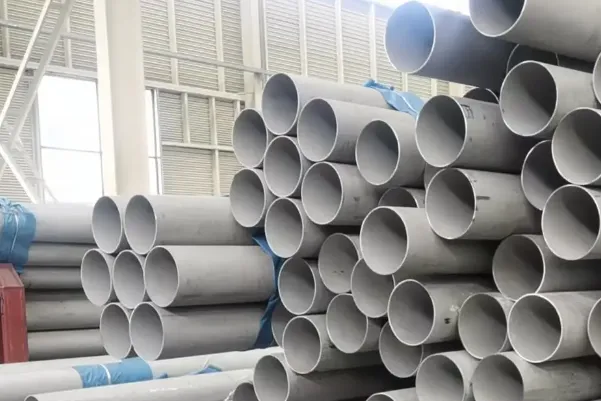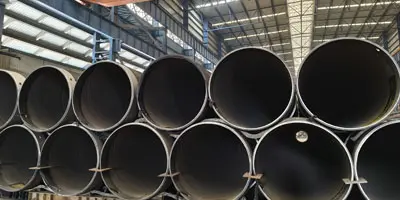Stainless steel water pipes are the best direct drinking water delivery pipes. They have a very low water leakage rate and can save precious water resources. In the 1980s, the water pipe leakage rate was about 17%. After switching to stainless steel water pipes, the leakage rate dropped to 7%. The water supply system was destroyed in the earthquake, but the stainless steel water pipe system was intact. In addition, compared with copper water pipes, stainless steel water pipes have good water permeability and do not corrode at high flow rates. Its.
1. Health and hygiene
Stainless steel materials are healthy materials that can be implanted in the human body, so for water supply pipes, the use of stainless steel pipes is the most beneficial to health. In the immersion water test, all indicators meet the requirements of national drinking water standards. The inner wall of the stainless steel pipe is smooth, and it will not accumulate scale and is not easily contaminated by bacteria after long-term use. There is no need to worry about the water quality being affected, and it can also prevent secondary pollution of water.
2. Material selection
All raw materials are made of grades 304, 304L, 316, and 316L, which meet the requirements of JIS4305. The above grades have the characteristics of stable performance, high strength and low thermal expansion coefficient.
3. Durable
The thin and dense chromium-rich oxide film on the surface of stainless steel makes stainless steel water pipes have good corrosion resistance in all water qualities including soft water, and even have excellent corrosion resistance when used underground; field corrosion test data show that the service life of stainless steel water pipes can reach 100 years, and almost no maintenance is required during the life cycle, avoiding the cost and trouble of pipe replacement, and the comprehensive use cost is low.
4. High temperature and high pressure resistance
Stainless steel can work safely for a long time at a temperature of -270℃-400℃. Whether it is high temperature or low temperature, no harmful substances will be precipitated, and the material properties are quite stable; the tensile strength of stainless steel water pipes is greater than 530 N/mm, and it has good ductility and toughness. The high strength of stainless steel water pipes greatly reduces the possibility of water leakage due to external forces, significantly reduces the water leakage rate, and effectively protects and utilizes water resources.
5. Energy saving and environmental protection
The inner wall of stainless steel pipes is smooth, the water resistance is very small, which reduces pressure loss and reduces transportation costs. Due to the low thermal expansion coefficient of stainless steel, heat loss is effectively reduced in hot water pipes. Stainless steel is a 100% renewable material that does not cause environmental pollution.
6. Wide range of uses
Stainless steel pipes can be widely used in cold water, hot water, drinking water, air, gas, medical gas, petroleum, chemical industry, water treatment and other pipeline systems.
7. Economical and practical
Since humans invented stainless steel in the 20th century, stainless steel has become a common material. At present, the best performance-price ratio of various materials of water pipes is stainless steel water pipes. This is related to the superior performance of stainless steel materials such as corrosion resistance, high strength, and strong impact resistance. Its service life can be said to be the same as the life of the building. One-time investment, lifelong benefits, can be said to be "once and for all".

Advantages and disadvantages of stainless steel drinking water pipes and other pipes
Advantages: First of all, it is safe and non-toxic, and is a healthy material that can be taken into the human body. The inner wall of the pipe is smooth, and it will not accumulate scale after long-term use. It is not easy to be contaminated by bacteria. There is no need to worry about the water quality being affected, and secondary pollution of water is eliminated. It has high strength, which is 3 times that of copper pipes and 8-10 times that of plastic pipes. It has low thermal conductivity and good thermal insulation performance, which is 25 times that of copper pipes. It is corrosion-resistant and has a long service life. It is easy and quick to construct. The material is light, healthy, environmentally friendly, water-tight, impact-resistant, high-pressure-resistant, low-flow, and convenient for engineering maintenance and changes.
Disadvantages: The manufacturing cost is relatively high and the construction process is complicated.
Development of stainless steel water pipes
Stainless steel is a material that can be directly implanted into the human body. Its advantages in health and environmental protection are unquestionable. Therefore, in some developed countries and regions, the use of stainless steel drinking water pipes has become very common.
The country that likes to use stainless steel water pipes the most is Japan, with a proportion of more than 95%. All residential areas are equipped with stainless steel drinking water pipes, which greatly improves water quality, avoids secondary pollution, and enhances earthquake resistance. In addition, a large number of dual-purpose water supply bridges (both used as water supply pipelines and as traffic bridges) are also widely built with
304 or
316 stainless steel. Nearly 3,000 stainless steel water supply bridges have been built since 1983.
Other countries with high frequency of use include the United States, Germany, Sweden, the United Kingdom, Italy and other countries. In contrast, the current use rate of stainless steel pipes in developing countries is still relatively low, and is generally only used in group enterprises and high-end community villas.






 English
English Español
Español بالعربية
بالعربية











 Phone :
Phone :  Whatsapp :
Whatsapp :  Email :
Email : 


